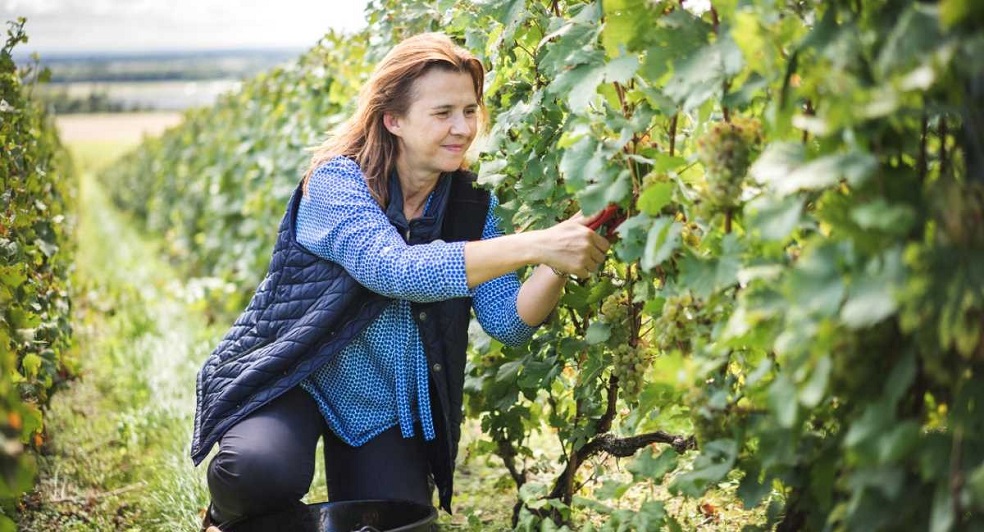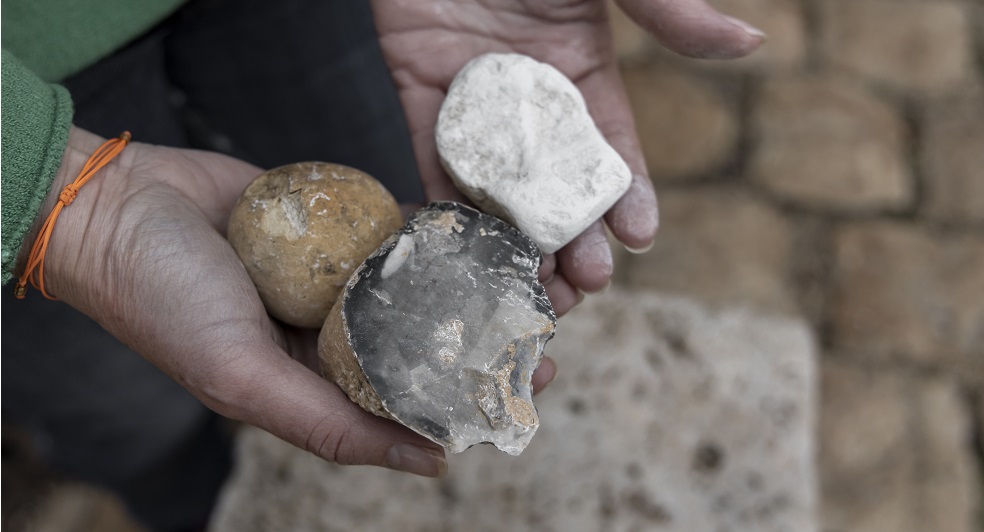Interview with Hélène de Troyes: Champagne Hélène Beaugrand
15th March 2023

Descendant of a long line of vignerons in the Aube region, Hélène Beaugrand launched her eponymous house in 2018 with six cuvées from her three hectares of vines in Montgueux. The village is some 10 km from Troyes and known as the Montrachet of Champagne with some of the most illustrious houses competing to source from the 200 hectares of vineyards. Hélène has managed to bottle the essence of the cru in her micro cuvées and chats with our contributor Lucy Edwards about her terroir, winemaking ethos and the future of the cru.
Lucy Edwards: Do you remember the first time you tasted Champagne?
Hélène Beaugrand: I do, it was at a traditional family Sunday lunch. We opened an old Dom Pérignon vintage: such a big wine. A complex and explosive Champagne for a first taste.
LE: How did you start working in the wine business?
HB: When I was growing up, I felt that the business was no place for a woman! So after 3 years of wine studies in Burgundy, I decided to fly around the world to start my winemaking career. I worked in South Africa, Australia, Mexico, New Zealand and the United States. After five years, I returned to my home country and became a wine agent in Paris for Languedoc estates and my family wine: Champagne Beaugrand! I was very fortunate to work with some of the most respected culinary institutions in the capital. Ten years later, I returned to Champagne to be the occasional Champagne winemaker for the family!

LE: Tell us about how you created your own Champagne house: Champagne Hélène Beaugrand.
HB: In 2018, we found ourselves in an interesting situation. Although it would have been easier to sell our grapes from the excellent harvest, I decided to take the hard road and created my own house. My family chose to stop making any more bottles and I had a unique desire to follow in my grandfather Leon’s footsteps and create wines to honour his legacy.
I started to discover all the daily challenges faced by anyone at the head of an estate after harvest. I was very grateful to have the support of my wonderful friends at Les FABULLEUSES of CHAMPAGNE (a collective of six other women winemakers), who really came to the table when I needed guidance and reassurance in my new role.
LE: And what makes your wine different from other Champagnes of the region?
HB: Even though each winemaker and vineyard have their own individual style, I truly believe that I am one of the luckiest people in Champagne with the exceptional terroir of Montgueux! My grandfather Leon Beaugrand saw the potential in this cru and put through multiple requests to the Government to include it in the Champagne region. After much perseverance, it became part of the appellation when the Aube region was included in the Appellation d’Origine Controlée law of 22 July 1927. And rightly so!
Although we are located in the Aube region, we are the southernmost point of the Côte des Blancs, and our wines are vastly different from our neighbours in the north. The South-south-east exposure gives a lot of sunlight to our slopes and produces sweet grapes with the unique terroir of chalk and flint. This gives our chardonnay (90% of the plantings of the cru) a full array of tropical flavours which has given the cru the nickname of the ‘Montrachet of Champagne’. Those who seek out our wines will be enchanted by the expressive, aromatic wine with generous flavour of exotic and citrus fruit with hints of butter and brioche.

LE: The Aube region is known to be one of the cleanest subregions of Champagne. Can you tell us about your vineyards and your organic practices?
HB: The whole of the Aube region was relatively unscathed by herbicides and pesticides during the 1970s, 80s and 90s. Not only is the climate slightly easier on the vines, but as the region received a lot less attention, there was less pressure to produce high yields and sell on to the houses.
Located about 10km west of Troyes, Montgueux is well known for its unique terroir and ideal climatic conditions, and I believe it has the healthiest vineyards in Champagne. With a hill at 268 meters, without a river with good ventilation and the South southeast exposure which aerates and warms up the vines and helps to not have major illnesses. I don’t use herbicides, work as organically as possible. I am very fortunate that the climate allows for beautifully ripe, rot free grapes to work with. I am certified HVE Level 3.
LE: How do you approach dosage?
HB: Dosage is like cooking without salt, and then adding a pinch of fleur de sel. When I do my dosage, I like to try to feel the same sweetness as when I taste the grapes in my vineyard. The idea is to keep the identity of the plot, and this cannot be obtained with a high dosage. For my wines, balance is nice between 0 to 4g/l dosage. Any more would overpower the wine.
My wine named Le Grand Carré has zero dosage, and it has been a very interesting wine to play around with. The grapes come from a single square plot at the bottom of the slope which has more soil than further uphill (which is used to create the Cuvée Derrière la Cabane), which means we are able to harvest the fruit with exceptional ripeness and richness.
From this same wine, I created a second release to highlight the importance of dosage. The first has zero grams dosage and the second has 1 gram, and one single drop is enough to completely change the character of the wine. In this case, it becomes a lot more aromatic and festive.

LE: How are the still wines of 2022 looking?
HB: 2022 was a ‘Fabulous’ vintage! A warm year, but as the chalk is naturally porous it absorbs excess water and rehydrates the vine when the weather is dry. We are blessed with Turonian chalk and silex, so the rains of 2021 were kept in reserve for 2022.
As we speak, the wine is sleeping in tanks and barrels. I will let you know what to expect soon after the assemblage in March.
LE: What can we expect from Champagne Hélène Beaugrand in the future?
HB: I have lots of plans, but the most important ones include converting my three hectares to biodynamic farming and continuing my craft with my son Cedric. We will continue to make our single vineyard wines and hope to share them with as many Champagne lovers as possible.
If you would like to seek out Hélène’s wines and follow her journey, you can find more information here:
www.champagne-helenebeaugrand.fr
Instagram: champagne_helene_beaugrand Facebook: Hélène Beaugrand
@fabulleusesdechampagne @cerclefemmesdevin
Author Lucy Edwards runs a wine consultancy business CED Agency, helping small producers in France to promote their wines in Australia and South East Asia. She also hosts Champagne masterclasses through www.champagneeveryday.com.au, as well as designing a Champagne inspired collection of handmade jewellery. You can find her on Instagram @champagnenerd
![]()
Lucy Edwards
She runs a wine consultancy business CED Agency, helping small producers in France to promote their wines in Australia and South East Asia. She also hosts Champagne masterclasses through www.champagneeveryday.com.au, as well as designing a Champagne inspired collection of handmade jewellery. You can find her on Instagram @champagnenerd
